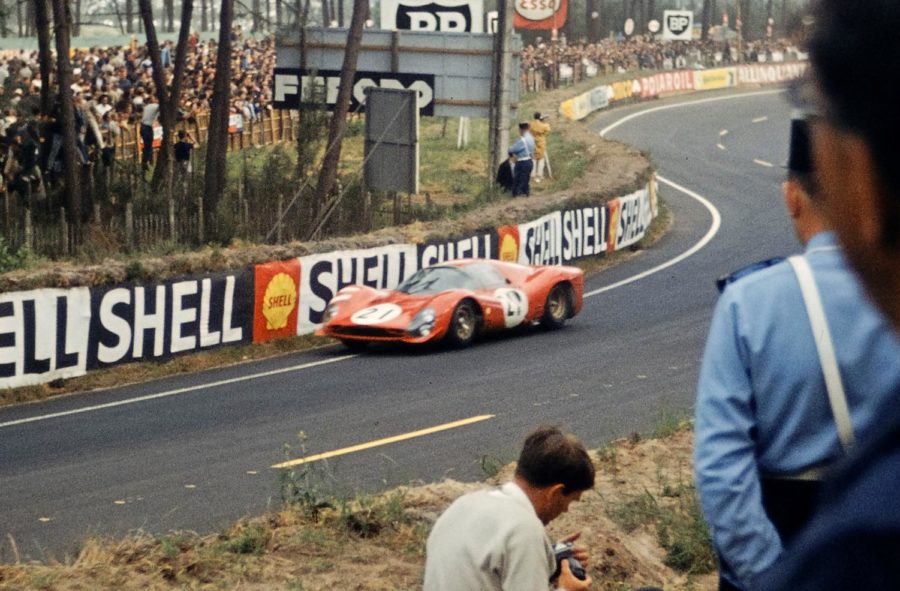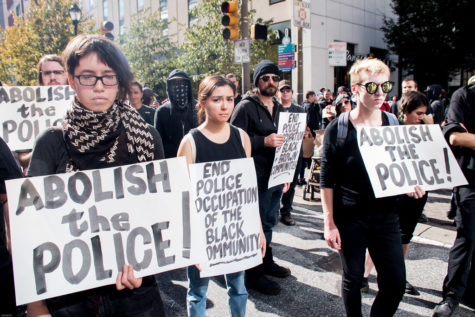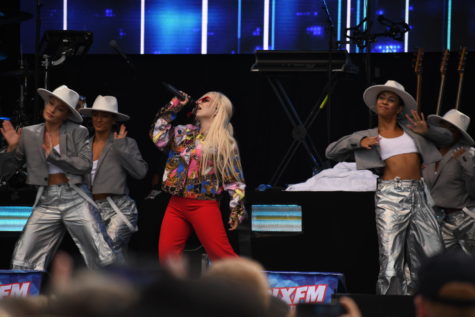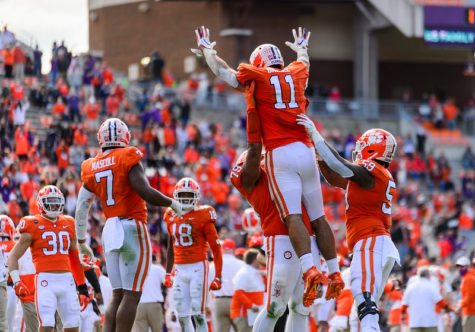Ford VS Ferrari: Why it Needs a Sequel, and Why it Should be on Ferrari’s Side
The tale of Ford vs Ferrari is one of Le Mans greatest stories. Despite this, Ferrari’s side of the story is almost never told.
https://flickr.com/people/44865643@N07/
Ferrari 330 P3 racing at Le Mans 1966.
October 14, 2021
Every year, the 24 Hours of Le Mans has a new story to tell. In 1953, the eventual winning drivers were given whiskey to cure their hangovers while driving, and more recently, in 2016, the leading Toyota car ran out of power in the last 10 minutes of the race. One of the greatest stories that Le Mans has to tell, is the 1966 Le Mans race, where Ford finally ended Ferrari’s five year win streak. Despite the race’s popularity, Ferrari’s side of the story is almost never told.
Ford VS Ferrari is one the highest-rated films of 2019, winning the Academy Award for Best Sound Editing and Best Film Editing. The film tells the story of how Ford beat Ferrari at Le Mans. The film only follows Ford’s side of the story, and the political and financial situation that Ford had. Given that Ferrari had incredibly similar issues, and the success of the film, it would be worth it to consider a Ferrari-sided sequel.
There followed a tirade of abuse, in Italian, after which Enzo said to his lawyer, ‘let’s go and eat,’ and they got up and simply walked out on the stunned Ford executives.
— James May
Ferrari had dominated Le Mans in 1960, 1961, 1962, 1963, however, the company was facing harsh financial difficulties, and Ford saw an opportunity. Ford was the biggest American car manufacture at the time, and could more than afford the 16 million dollar deal that Henry Ford II and Enzo Ferrari had agreed on (the deal is worth over 140 million dollars today).
On May 21, 1963, Ford arrived in Maranello with an army of executives and lawyers. Enzo Ferrari, on the other hand, was accompanied with the local town lawyer. While reading the contract, Enzo stopped when he read the clause that effectively handed the control over the motorsport side of Ferrari to Ford.
“There followed a tirade of abuse, in Italian, after which Enzo said to his lawyer, ‘let’s go and eat,’ and they got up and simply walked out on the stunned Ford executives,” said James May on The Grand Tour, season one episode six. When the ford executives returned to America, Henry Ford II demanded they make a car to crush Ferrari at Le Mans.
For the 1964 and 1965 Le Mans, Ford wouldn’t have any cars finish, but they were improving. Whereas Ferrari was only able to make minor tweaks with their car due to budget reasons, Ford was making leaps and bounds in innovation for their car.
Ford spent an estimated 500 million dollars in today’s money to develop the car, and with their huge budget, they created groundbreaking technology. They created interchangeable brake pads to prevent the brakes from shattering from the heat, they used a dynamometer to simulate the entire Le Mans track, and the car managed a top speed of 210 mph compared to Ferrari’s 190 mph.
Ford showed up to the 1966 Le Mans with eight cars, 20 tons of spare parts, and a squad of world-class drivers that included, Bruce McLaren, Chris Amon, and Graham Hill. Ferrari only showed up a trio of cars, but Ferrari had a trick up their sleeve: Formula 1 World Champion John Surtees.
Ferrari wanted Surtees to be “the hare,” which means Ferrari was banking on Surtees to push the Fords hard enough that they would break down. Moments before the race started however, Ferrari’s team manager would not allow Surtees to drive, due to a spat they were having.
“And I stormed away, drove back, and had it with the old man. As the Italian papers put it, they showed a picture of me walking out the gates and saying ‘the divorce of John Surtees and Enzo,'” said John Surtees on the Grand Tour season one episode six.
Where all the Ferrari’s had broken down, Ford would take all three slots on the podium. Ford would continue to win for the next three years, and in 1968, Fiat took ownership of Ferrari for a lower price than what Ford had offered.
The movie Ford vs Ferrari tells the same story, just without mentioning how much of an advantage Ford had with development and Ferrari’s driver troubles. The entire reason Ford raced Le Mans was to have the company reach the top of the charts in terms of sales, where Ferrari raced to keep the company afloat.
The movie also highlights Ford’s team manager, Leo Beebe, and his dispute with Ford to not have Ken Miles race. Ken miles played a key role in the development of the Ford GT, and lead the race by four laps before being told by Beebe to slow down and let Bruce McLaren catch up to take the victory. This driver-manager friction goes parallel with the friction that the Ferrari team manager and John Surtees had.
Ferrari’s drama and problems when facing Ford were incredibly understated in the movie. Given how large the fanbase is now, a sequel told in Ferrari’s perspective would not only be dramatic, but successful too.














